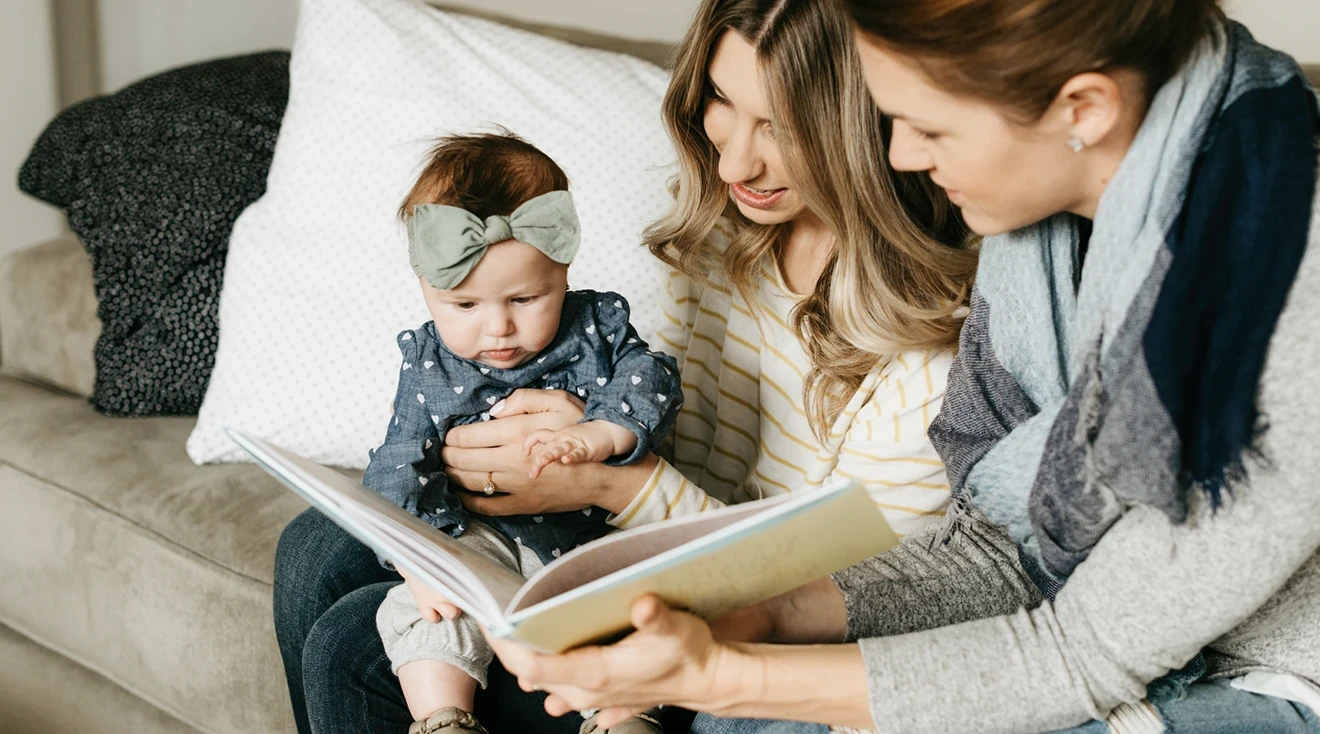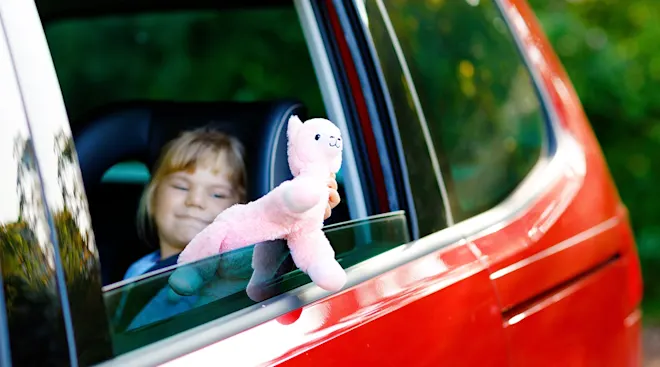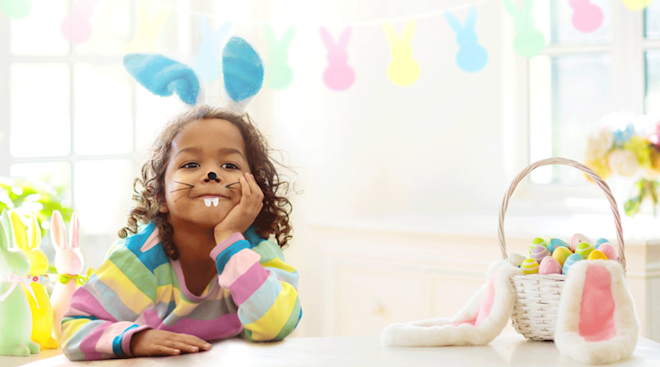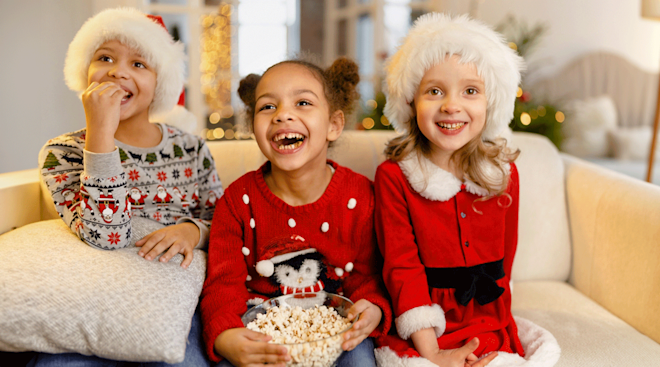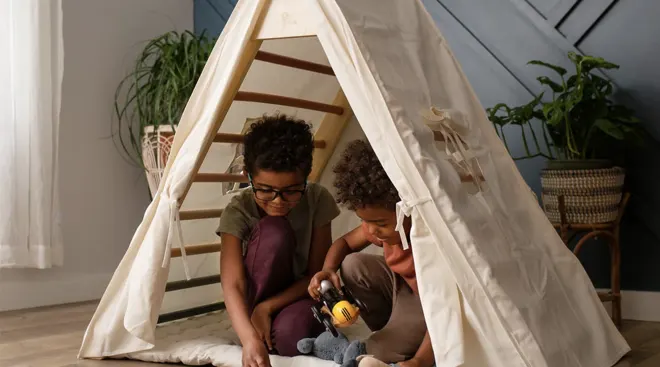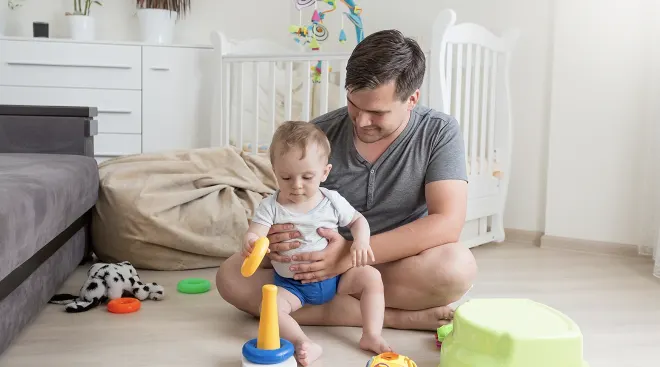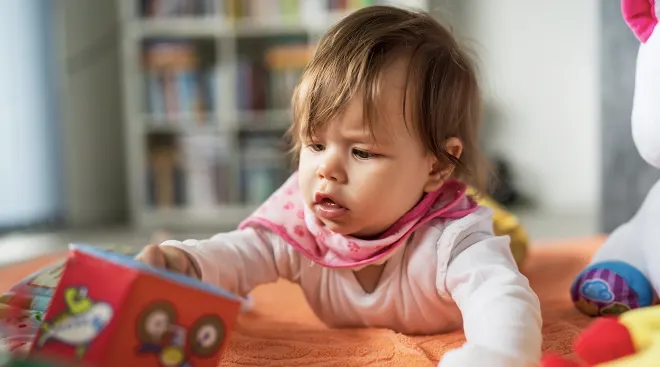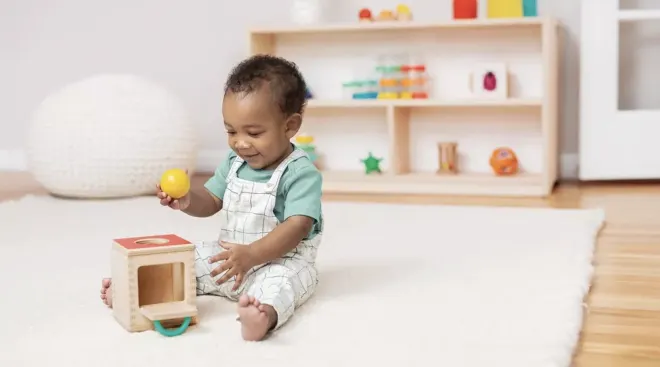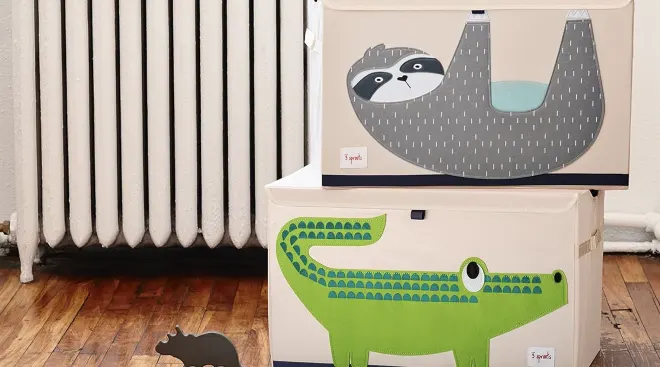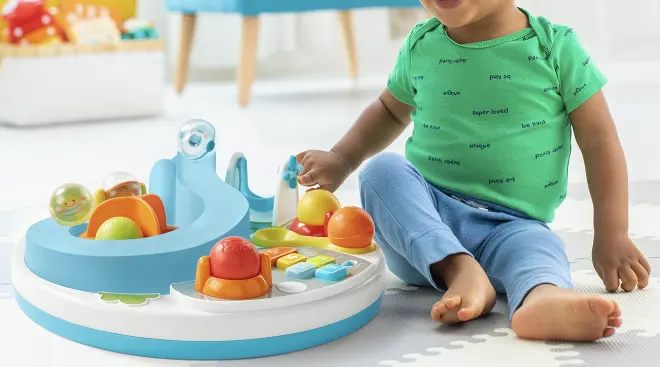When to Start Reading to Baby, According to Experts
It seems like the entire day is spent tending to baby’s physical needs—feed, nap, diaper, repeat. But there’s more you can do to help your little one develop, learn and grow beyond the more tedious to-dos. In baby’s first year alone, their brain will double in size as synapses rapidly form, and there’s a lot you can do to help foster these all-important connections. For starters, get out a book! Wondering when to start reading to baby? Turns out there’s no time like the present! Here’s what to know and how to begin your reading journey together.
Reading to newborns may not feel completely natural. After all, your one-person audience can’t even produce tangible tears yet, let alone speak, read or even react. So when should you start reading to your baby? The simple answer is: ASAP. Even if that little blob of yours can’t quite comprehend the words you’re reading aloud, they’ll still benefit—developmentally and emotionally—from hearing them.
“Kids who start reading with parents as babies have faster language development and long-term cognitive benefits—even adjusting for socioeconomic status and education level,” explains Rebekah Diamond, MD, a pediatric hospitalist and assistant professor of pediatrics at Columbia University. “There’s a ton of sensory exploration, joint attention and a world of developmental engagement that happens every time baby interacts with a book, even from the earliest stages of life.”
This isn’t just anecdotal; there are a ton of studies to back this up. Research shows that reading to babies gives them an early leg up on vocabulary and literacy skills when they start elementary school. One study found that babies make more word-like sounds when being read to versus simply playing—and, in turn, parents become more verbally responsive. This may help explain why shared reading improves language acquisition.
The benefits of reading to babies don’t end there. “Some parents have been made to think that the benefits of early reading are solely academic—something to do only if you want to raise a hyper-literate baby genius,” says Diamond. But it’s far simpler, and simultaneously more complicated, than that. “Reading to babies is a fun way to engage in normal growth and development. The complex process of reading—including holding (or even chewing) a book, turning a page, following a story, repeating sounds, bringing attention to objects on a page and following a narrative—enhances fine-motor, social and problem-solving skills,” explains Diamond.
What’s more, reading to babies is a beautiful way to bond. One study found that shared reading during infancy has such a positive impact on the parent-child relationship that it’s predictive of gentler parenting later on. Additional research indicates that parents who engage in shared reading and play with their babies have less stress about their relationship and fewer child behavioral issues beyond the toddler years.
While there’s no single answer as to when to start reading to baby, the reality is that it’s never too early. You can even read to your child in utero, as the brain is forming even then, explains Katelyn Rigg, M.Ed, a certified reading specialist, assistant professor of education and founder of Literacy Learn. So if you’re pregnant, don’t feel shy about narrating out loud to your bump. And if you didn’t do a lot of prenatal read-alouds? Don’t stress. Diamond says she began reading to her own daughter regularly when she was a couple weeks old. That said, she advises that you start reading to baby before their first birthday—and the sooner, the better.
It may seem overwhelming to add one more task to an already exhausting day, but there’s nothing wrong with starting slow. Plus, books for babies are generally short and sweet, so reading to baby will only tack on a few extra minutes to your routine in those early months.
There’s no right or wrong way to read to baby. Start by making books accessible. “Leave books around the house; use them for bedtime routines; throw them in your car, stroller and diaper bag, and you’ll be on your way to making literary exploration just another part of infant life!” suggests Diamond.
As your little one’s brain continues to develop, you can begin to introduce increasingly engaging elements to storytime. Use silly voices, go for rhyming options, show them colorful illustrations, embrace texture and opt for a variety of books with diverse casts of characters to enrich baby’s experience. Here are some additional tips for reading to newborns, babies and toddlers:
Reading to newborns
At this early stage, it’s all about getting into the habit of making reading a regular part of baby’s day. “Laying the foundation early and making it part of your daily routine are the biggest steps in building a positive relationship with books,” says Diamond.
An easy way to do this is to incorporate reading into your bedtime routine. Before laying baby down in their crib, after a bath and diaper change, snuggle up and choose some baby stories to read together. Keep it short and sweet.
As for what books to read to newborns, Emily Silver, NP, IBCLC, a family nurse practitioner and lactation consultant in Boston, says that “books with simple illustrations and patterns—especially black and white—will capture their attention.”
Reading to babies ages 3 to 6 months
At this point, baby is at the age where they start putting everything in their mouth; it’s a good idea to stick with board books or other sturdy options—because, yes, letting baby explore books with their mouth is all part of the sensory experience. Thick pages are less destructible and also easier for little fingers to grip and flip through.
Silver recommends beginning to introduce books with more interactive features at this stage; look for different textures, sounds, mirrors and liftable flaps. These will keep baby engaged, provide sensory stimulation, promote later literacy and help develop fine-motor skills and tactile discrimination.
Reading to babies ages 6 to 12 Months
As baby gets older, you can begin to involve them more in the reading process. Silver suggests helping them begin to build their vocabulary by taking note of different objects, or asking them to point out specific animals or colors. Even before they can speak, babies are able to associate words with their meanings.
This is also a fun age to start bringing baby to storytime at the library. In addition to providing the benefits of reading to baby, it also offers some social stimulation. Plus, it’s a nice and convenient way to meet other new parents.
Reading to toddlers
After your child’s first birthday, continue to encourage their love of books and reading. They’ll start to develop their own preferences, and may have favorites they want you to read over and over again. As much as you may want to try some new titles, rereading actually boosts pre-literacy skills by improving comprehension and fluency, strengthening phonemic awareness and building vocabulary.
Right says that as your child gets older, you can pause to discuss the story more. Once they’re speaking, encourage them to name objects or ask questions. This will help model how they’ll engage with text once they’re independent readers.
You can also help your toddler follow along. “Be sure to point to the words as you’re reading to help your child make the connection between spoken and written words,” says Rigg. “This also helps build their working memory as they work to listen and hold the words you’re saying, then repeat them.”
At the end of the day, Diamond’s most important bit of advice for keeping the love of reading alive is to make it fun for everyone. “Just remember—get books you like!” she suggests. “It’s so much easier to engage with books with your child if the books are enjoyable to you too.”
Please note: The Bump and the materials and information it contains are not intended to, and do not constitute, medical or other health advice or diagnosis and should not be used as such. You should always consult with a qualified physician or health professional about your specific circumstances.
Plus, more from The Bump:
Rebekah Diamond, MD, is a pediatric hospitalist and assistant professor of pediatrics at Columbia University. She is also the author of the 2022 book Parent Like a Pediatrician: All of the Facts, None of the Fear(https://www.amazon.com/Parent-Like-Pediatrician-Facts-None/dp/0806541636?&linkCode=ll1&tag=tb-books-to-read-to-babies-20&linkId=b134936edecc5b4e2ef6a0edac67f5e9&language=en_US&ref=asli_ss_tl). She earned her medical degree from the Mount Sinai School of Medicine in New York.
Katelyn Rigg, M.Ed, is a certified reading specialist, reading teacher and assistant professor of education. She shares resources for other educators and parents at LiteracyLearn.com.
Emily Silver, NP, IBCLC, is a family nurse practitioner, lactation consultant and co-founder of Newborn and Parenting Support (NAPS) & Nurture by NAPS in Boston.
Nature Reviews Neuroscience, Imaging structural and functional brain development in early childhood, August 2018
American Academy of Pediatrics, Reading with children starting in infancy gives lasting literacy boost, May 2017
Language Learning and Development, The Influence of Interactive Context on Prelinguistic Vocalizations and Maternal Responses, January 2016
Journal of Developmental & Behavioral Pediatrics, Early Shared Reading Is Associated with Less Harsh Parenting, September 2019
The Journal of Pediatrics, Links between Shared Reading and Play, Parent Psychosocial Functioning, and Child Behavior: Evidence from a Randomized Controlled Trial, October 2019
Learn how we ensure the accuracy of our content through our editorial and medical review process.
Navigate forward to interact with the calendar and select a date. Press the question mark key to get the keyboard shortcuts for changing dates.
































